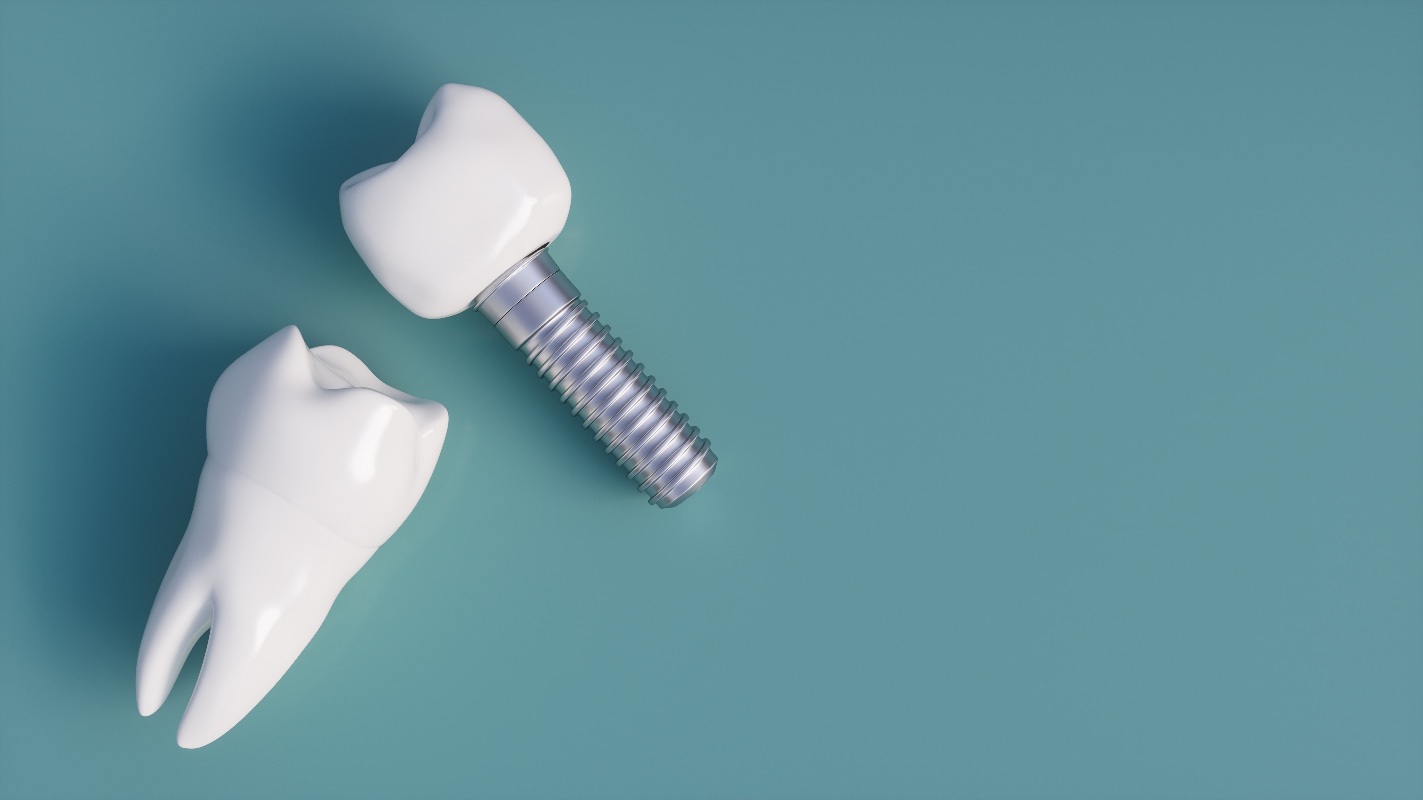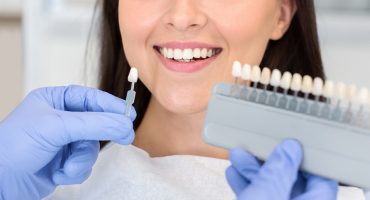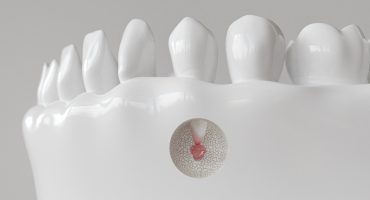Patients who have had their teeth pulled had, at least temporarily, come to terms with an unsightly tooth gap. Thanks to modern technologies and materials, however, it is now possible in many practices and clinics to replace the tooth immediately after removal with an immediate implant. This offers great advantages in terms of aesthetics, especially in the front area. Read more about the basic requirements for such an implant, the advantages and disadvantages of the immediate implantation as well as the costs.
Definition: Immediate Implants
Immediate implants are a special type of fixed denture. Unlike conventional dental implants, it's immediately inserted after the extraction of a tooth, but no later than after 48 hours and can be immediately provided with a temporary restoration. The usual healing time and the otherwise required follow-up surgery to expose the implant is eliminated. For the patient, this means a considerable relief because he has to visit the dental practice or the dental clinic only once and the dental health is restored relatively quickly.
Requirements for Immediate Implants
In order for an immediate implantation to be feasible, a sufficiently large amount of bone substance must be present in the jaw. This is the only way to achieve sufficient primary stability (mechanically stable hold in the bone). This is measured when inserting the dental implant into the jaw bone on the basis of the insertion torque, which should ideally be higher than 30 Ncm.
Before an immediate implant is used, the dentist must also ensure:
- that there is no acute inflammation. For example, if a tooth had to be removed due to an inflamed root, immediate implantation is not possible.
- that the gum did not separate from the underlying jawbone when extracting the tooth. To prevent this, experts use special instruments (periotomes), with which a tooth can be released from its anchorage. Since these tools are very thin and sharp, they protect the surrounding tissue and thus enable immediate implantation. In part, the dentists transplant connective tissue that they take during this procedure, for example, on the palate.
In the decision for or against an immediate implant, the condition of the jawbone plays a significant role. Although the exact bone structure is also recognizable on an x-ray, a final verdict can only be made after the tooth has been pulled.
Procedure for an Immediate Implantation
How exactly this particular tooth replacement is transplanted depends on the individual requirements of the jawbone, especially on the dimensions of the hole. Usually, the space left by the drawn tooth or root does not exactly match the shape of the pin needed for the immediate implant. If the hole needs to be enlarged, it does so with immediate implantation rather than with a drill with a compactor that pushes aside the bone material as it rotates. As a result, the substance is retained and is available for a good grip of the implant. Simultaneous augmentation, a filling of the hole with so-called bone substitute material, is also possible. This regresses over time and ensures that the implant grows in optimally.
Material and types of immediate implants
The pins for immediate implants are usually made of pure titanium or a titanium alloy. This material has also become well established in other areas of implantology as it is generally well tolerated by patients. Alternatively, the dentist can use implants made of zirconia ceramics, which are also considered as unproblematic. However, there are no long-term results regarding durability.
Immediate implants use two different pin shapes:
- The apical pin is narrow, but has a deep thread that cuts into the bone as it inserts the implant, providing good support.
The other variant is a generally broad coronal implant body, which has a flat, increasingly narrowing thread. In this case, the bone is slightly compressed when screwing in at the narrowest point of the hole and thus can absorb the force well during chewing in this area.
Advantages and Disadvantages of Immediate Implants
If, after a tooth loss, the burden of the pressure on the jawbone is removed, it automatically recovers. This can be proven by an immediate supply of a fresh extraction wound with an immediate implant. Patients also benefit from this method in functional and aesthetic terms. You can use the new tooth directly after the procedure and avoid weeks of edentulousness, which is especially in the anterior region perceived as particularly unaesthetic. Another advantage is the shortened treatment duration of usually only one session.
However, immediate implants also pose some risks. However, the following symptoms are rare if the surgery is performed by an experienced implantologist:
- Bruising
- Infections in the implant area
- Damage to surrounding teeth or blood vessels
- Problems with the nasal cavity or sinuses
- Nerve damage to the mouth or the oral cavity caused by tingling, numbness or pain
Compared to conventional implants, the risk of losing an immediate implant is statistically slightly higher. However, careful consideration of primary stability, very thorough oral hygiene and regular dental checks can reduce this risk.
Cost of Immediate Implants
The material costs for immediate implants are similar to those of conventional implants. If the new teeth can be loaded immediately, this not only saves time, but also the expenses for the surgery. Therefore, the provision of immediate implants is in most cases even cheaper than with the usual implant treatment.
In the statutory health insurance, implants are generally considered a private service. They therefore only assume a fixed subsidy, which depends on the respective findings. Which therapy is used, whether a bridge or an implant, is not relevant. The amount of the subsidy depends on the usual standard supply. If the patient can prove by means of a bonus booklet that he has regularly been to the dental check-ups in the last five years, the fixed subsidy increases by 20 percent. If proof is provided over a period of ten years, an increase of 30 percent is envisaged.
Private health insurance companies usually contribute up to 80 percent of the costs for an immediate implant, if the dentures are medically justified. For new customers, however, applies to some companies, a so-called "dental season". This increases the maximum amount for reimbursable dental expenses every year until the entire amount is finally taken over.
Weitere Beiträge

Distraction
Before an implant, i.e. firmly anchored dentures, can be used, there are preparatory measures for the intervention of the implantologist. Distraction osteogenesis or callus distraction is an operative procedure in the field of oral and maxillofacial surgery for new bone formation.



